| A romantic pleasure palace, Chenonceau was created from the
Renaissance onwards by a series of aristocratic women. A magnificent avenue
bordered by plane trees leads to symmetrical gardens and the serene vision that
Flaubert praised as "floating on air and water". The château
stretches across the river Cher with a 60m gallery built over a series of
arches, its elegant beauty reflected in the languid waters. The grandeur
continues inside with splendidly furnished rooms, airy bedchambers and fine
paintings and tapestries. |
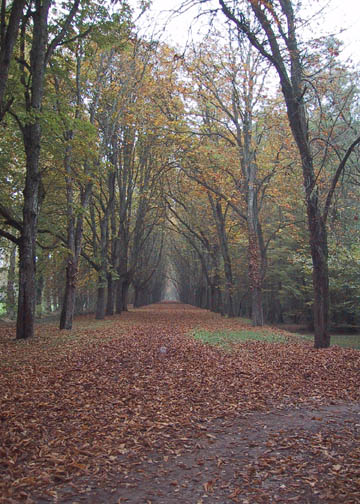 |
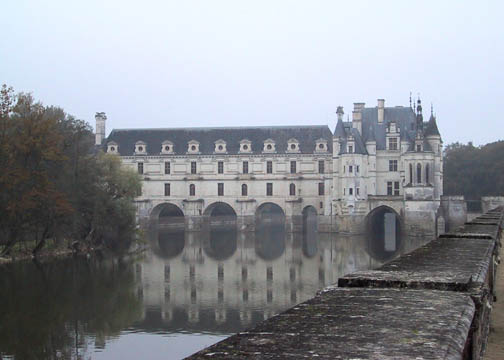 |
By building Chenonceau on the Cher in the 16th century, Thomas
Bohier razed the castle-keep and the fortified mill of the Marques family only
keeping the donjon: The Marques Tower, which he transformed in Renaissance
style. The forecourt reproduces the layout of the former medieval castle
demarcated by the moats. Next to the Tower there is also the well decorated with
a chimaera and an eagle - the emblem of the Marques family. |
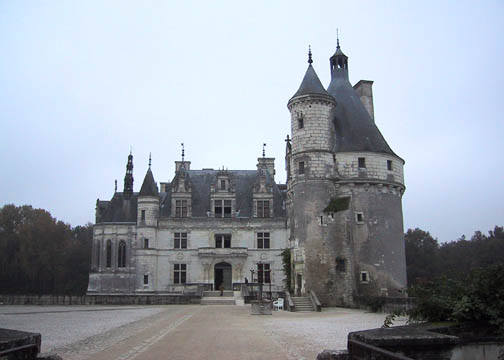 |
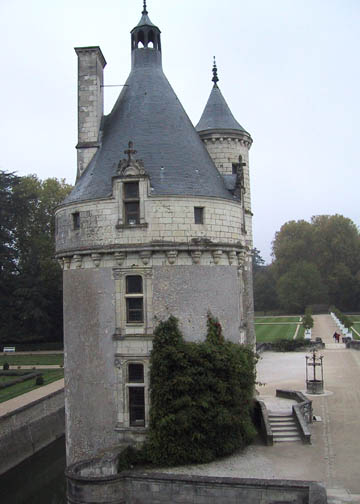 |
| To the right of the entrance and the Marques Tower is the more
intimate Garden of Catherine de Medici (below left), with a central pool and
from which we discover the West facade. The Garden's floral decoration changes
in the spring and in the summer needs 130,000 bedding plants grown on the Estate
to be planted. Lining the Court of Honour, the Domes Building (not shown here),
from the 16th century, formerly housed the Royal Stables and the silk worm farm
introduced into France by Catherine de Medici. Around the castle, you will also
find a 16th century farm and a 70 hectare park. To the left of the entrance lies
the Garden of Diane de Poitiers (below right) whose entrance is commended by the
Steward's house: the Chancellery, built in the 16th century. This garden is
protected from the Cher by elevated terraces from which there are beautiful
views over the borders and over the château. |
 |
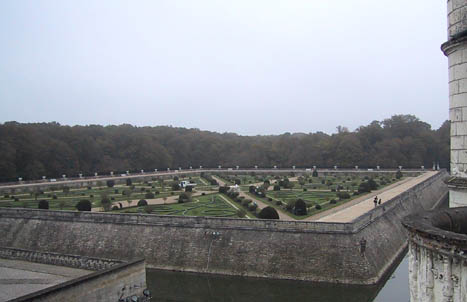 |
| Walking toward the castle, built on the piers of the former
fortified mill, you will discover the monumental entrance. Dating from the
period of François I, made from sculpted and painted
wood, it has, on the left, the coat of arms of Thomas Bohier, on the right those
of his wife, Katherine Briçonnet - the builders of
Chenonceau - topped by the Salamander of François I and
the inscription "François, by the grace of God, King of
France and Claude, Queen of the French. |
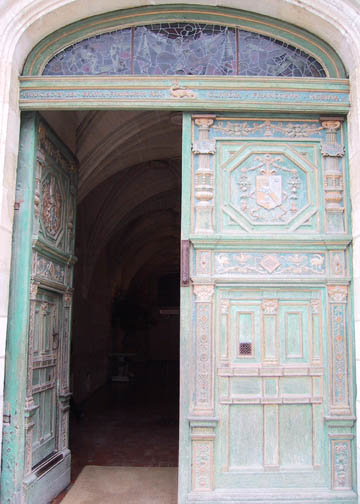 |
| Open daily all year round from 16 March to 15 September 9-19.00 and
from 16 September to 15 March varying closing times. Tel.: 33+ (0)2 47 23 90 07.
www.chenonceau.com |






